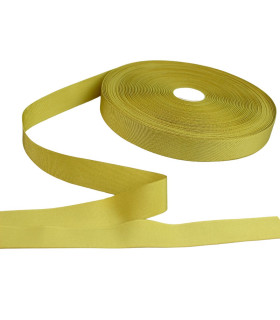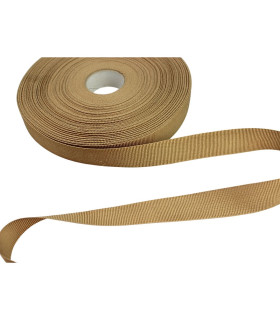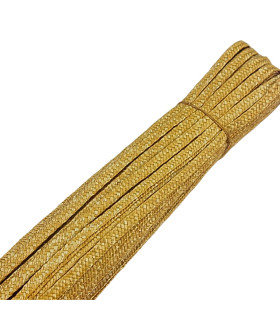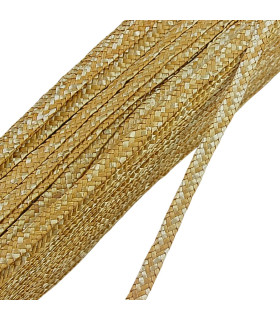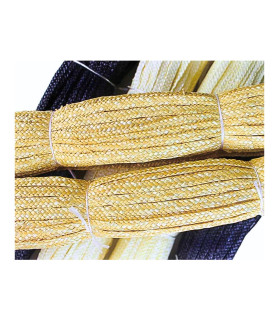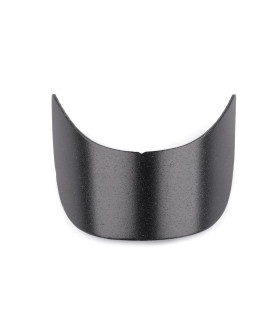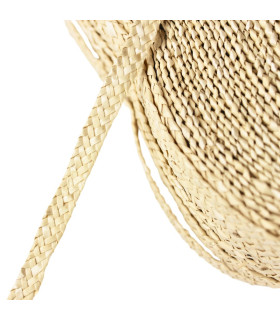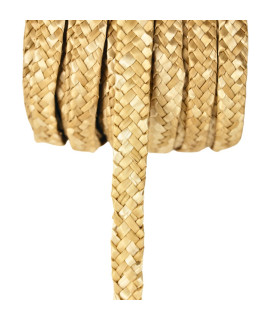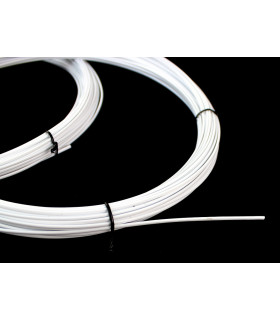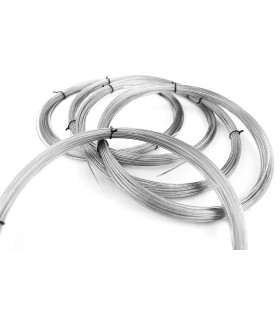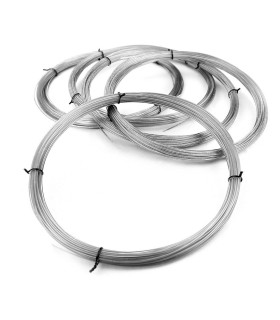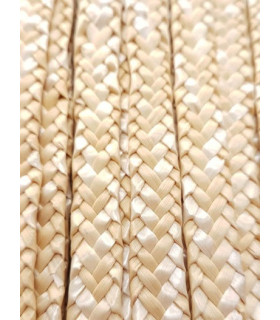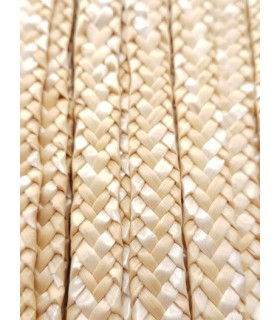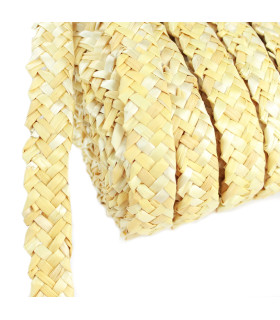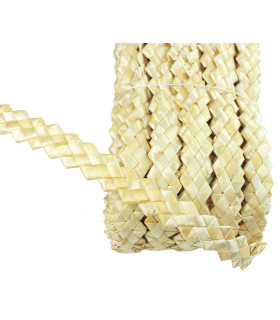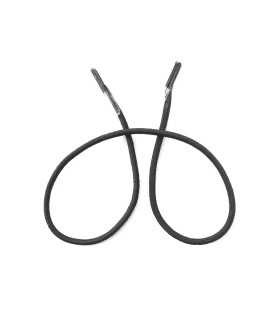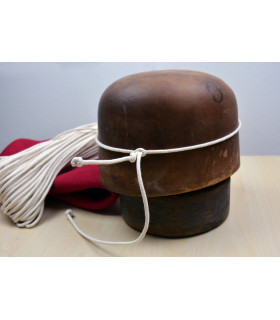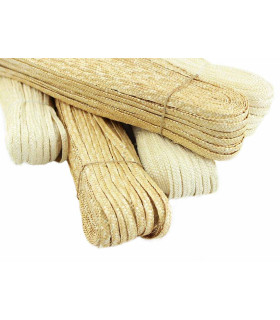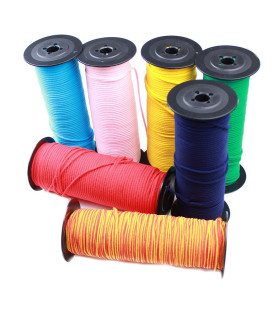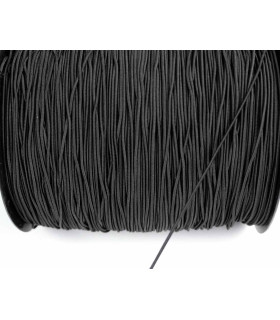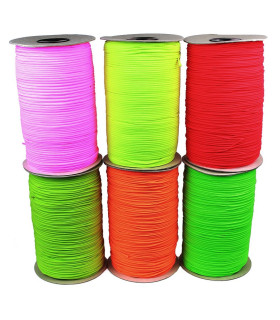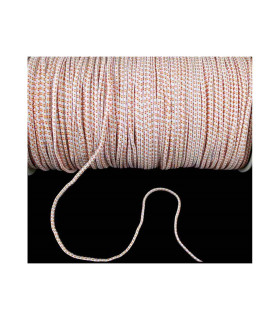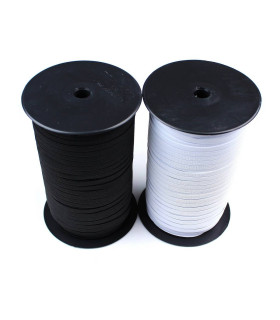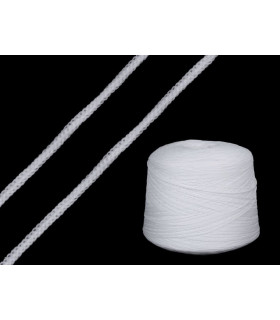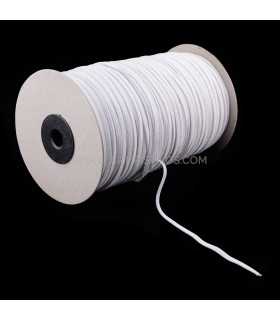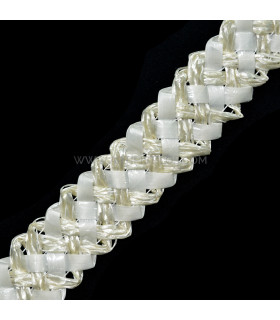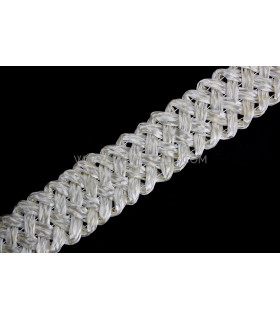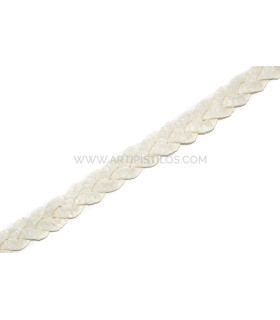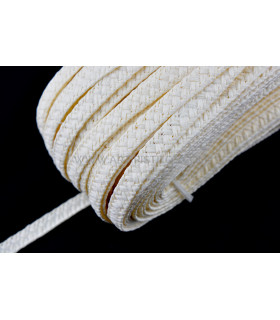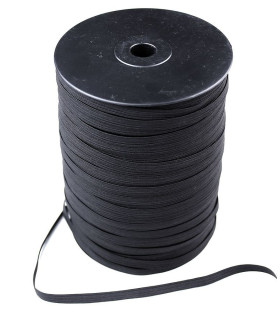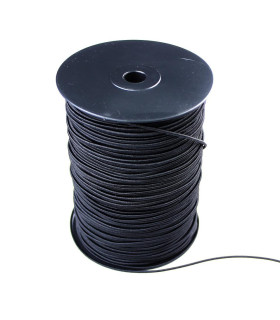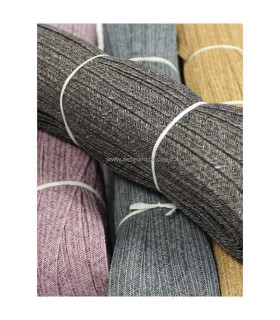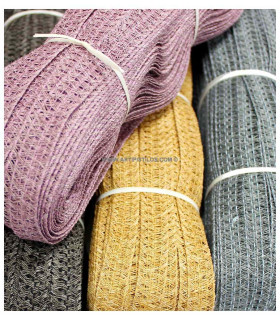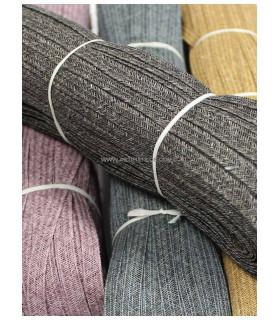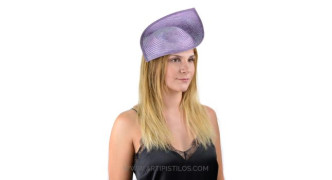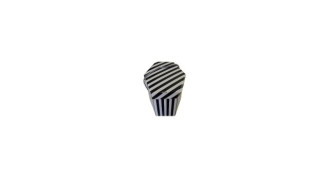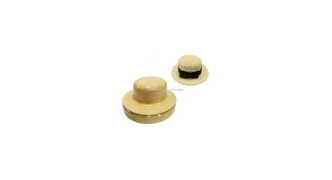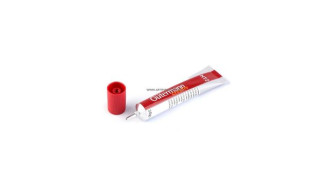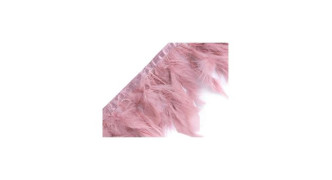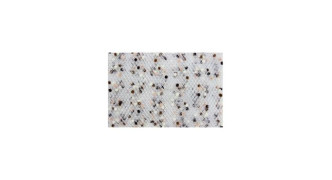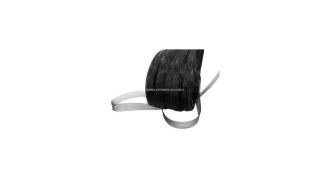MILLINERY MATERIAL
TRANSLUCID WHITE SOFT MILLINERY PLASTIC WIRE 1,55 MM. X 10 METERS
SOFTMW02/_BLANCOHARD MILLINERY WIRE 1.55 mm. x 10 METERS
HARDSALAMB/NATURAL BRAIDED STRAW TAPE 10mm "METROPOLITAN"
CTMETROPOLITAN/Traditional Millinery Straw Braid "HERMITAGE" 18mm
CTHERMITAGE/Traditional Millinery Straw Braid 5 - 7 mm
CTPAJA5MM/REDUCED
REDUCED
EVERYTHING YOU NEED FOR HAT MAKING
Ribbons can have multiple uses. With the help of a hat mold, you can make one with this material. Here we offer you natural straw ribbon, raffia ribbon, vegetable fiber ribbon or sinamay braided ribbon, among others.
In case you didn't know, raffia is a fabric from a palm species that grows in Africa and tropical America and is very strong and flexible. On the other hand, sinamay is a delicate, soft, and easily moldable fabric originally from the Philippines. Hats and fascinators made with sinamay have a light and translucent appearance ideal for summer.
The chenille ribbon is perfect for making winter hats. Chenille is a plush fabric made of silk and wool fibers. It has a soft, velvety touch, a voluminous pile, and is quite durable.
Ribbons can also serve as decorations for the base of the hat crown. Such is the case with leather ribbons, the grosgrain ribbons or the felt ribbons.
Inside the hats, a hat lining is usually placed. This prevents direct contact between the hair and the main fabric of the hat and, thereby, prevents the hat from degrading more easily. Here you have several options to choose from.
Whether for hat accessories or to reinforce the structure itself, you will need different types of wire. We have plastic-coated wire with memory and many other types of covered wires both in this section and in others.
There are many more products in this section, but it's best if you dive in and discover them for yourself.
WHAT IS A HAT?
Hats are accessories for blocking sunlight and/or to keep the head cool or warm depending on the material. This accessory has been not only a practical item but also a highly prestigious fashion statement.
The enormous variety of hat types that exist and have existed, with multiple types of materials, accessories, and different shapes, have adapted to the social standards of each era and the specific needs of each season.
Although there are many different types of hats, they all have two main elements in common: the crown, which is placed on the head, and the brim, located around the base of the crown and which serves to protect the face and neck from the sun and/or to grasp the hat when putting it on or taking it off.
The size and shape of both aforementioned elements can vary greatly, leading to different varieties of hats. Panama hats, bowler hats, fedora hats, cowboy hats, boater hats… The list goes on!
Each of these hats requires, for their manufacture, specific techniques, materials, and tools. In this section, you can supply yourself with all the materials needed to make multiple types of hats and to adorn them.
WHAT IS A HATTER?
Hatters are artisans dedicated to the manufacture, repair, and/or sale of hats.
To make a hat, the first step is to select the material to be used and shape it according to the reference mold. Then, a special iron is used to define the hat's shape, and if necessary, stiffeners are applied to the brim to stiffen it. Finally, the finishing touch of the external ribbon or adding other ornaments such as bows or flowers comes last.
A typical repair that a hatter might perform is to renew the inner lining of the crown. To do this, it must be carefully removed, soaked in solvent, and rubbed to remove dirt. Another simple operation is to replace worn liners, ribbons, and ornaments with new ones.
The golden age of hatters was the 19th century and much of the 20th century. Today, the use of hats is not as common, so the few who practice this artisan craft direct their creations to a more affluent clientele or the world of cinema or theater.
WHAT ARE FABRICS?
Fabrics or textiles are sheet materials made by crossing and binding threads or fibers.
When this process occurs with longitudinal threads (warp) and transverse threads (weft), they are called 'woven fabrics.' When it is done by making loops forming a mesh, they are called 'knit fabrics' or 'tricot.' They can also be made by crossing two or more warp threads, without weft, as with some types of tulle.
The textile industry is called the weaving industry. The manufacture of fabrics from natural, artificial, or synthetic fibers, along with their multiple combinations, generates a wide variety of types of fabrics.
Man has created various types of fabrics to protect his body and his homes from multiple climatic phenomena (heat, cold, rain, wind, light). In the Neolithic period, they began spinning flax for summer and wool for winter, inventing the spindle and the loom. Later on, all kinds of accessories, tools, and complementary items with fabric were created, including hats.
The design of looms was refined over the centuries but did not undergo significant changes until the inclusion of the steam engine. Thus was born the industrial loom, which drastically multiplied the production of fabrics, thereby making them more affordable.
We can classify fabrics into 3 types according to their structure:
- Woven or 'warp and weft' fabrics, which include taffeta, twill, and satin or sateen.
- Complex weaves (more elaborate than plain weaves) that include pile fabrics (corduroy, velvet, etc.), double or reversible fabrics, and others like brocades, piqué, damask, etc.
- Knit or tricot fabrics, which can be flat or tubular depending on the machine used.
There are 3 types of fibers: natural, artificial, and synthetic
- Natural ones come from plants or animals (wool, cotton, silk, linen, etc.).
- Artificial ones result from the transformation of a natural raw material, such as cellulose.
- Synthetic ones are entirely generated in a laboratory (polyester, nylon, acetate, etc.).



